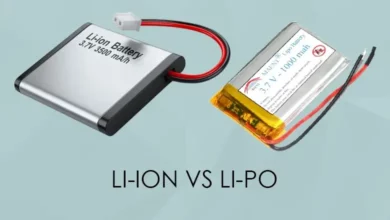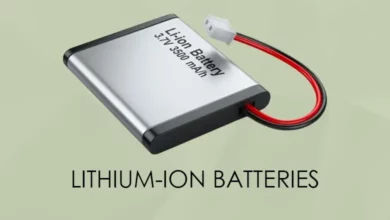
Table of Contents
Understanding Li-Po (Lithium Polymer) Batteries
Li-Po, an abbreviation for Lithium Polymer, stands out in the realm of rechargeable batteries due to its lightweight design and impressive energy density. It is used in most phones, such as the LG Velvet 5G phone and many other devices.
Functioning of Li-Po (Lithium Polymer) Batteries
Li-Po batteries are composed of distinct layers, featuring crucial elements like a positive electrode (cathode), a negative electrode (anode), and a separator. These layers are encapsulated within a pliable and light polymer electrolyte.

Typically holding a nominal voltage of 3.7 volts per cell, Li-Po batteries can be interconnected in series to achieve higher voltages tailored to specific applications. To ensure their durability and safety, these batteries demand a precise charging routine, as deviation in either overcharging or discharging below a certain voltage can result in damage or failure.
One notable advantage of Li-Po batteries is their adaptability. The polymer electrolyte enables diverse form factors, making them apt for devices where space and weight are critical considerations.
Lifespan of Li-Po (Lithium Polymer) Batteries
Li-Po batteries operate within a defined number of charge cycles, with a cycle encompassing a full 0-100% charge. As these batteries undergo usage and recharging, their capacity gradually diminishes. Typically, a Li-Po battery can withstand several hundred charge cycles before experiencing a noteworthy decline in capacity.
Sensitivity to temperature is a notable factor, with high temperatures hastening the aging process and diminishing battery lifespan. Shallow discharges, ranging from 20% to 80% instead of 0% to 100%, contribute to prolonged battery life, while frequent deep discharges accelerate capacity degradation.
Safety of Li-Po (Lithium Polymer) Batteries
Li-Po batteries exhibit sensitivity to physical damage, such as puncturing or crushing, which can lead to leakage, overheating, or even fire. Proper handling and care are imperative to prevent physical harm to the battery. Temperature sensitivity persists, with exposure to high temperatures accelerating aging and elevating the risk of thermal runaway.
Quality plays a pivotal role in safety; higher quality batteries, often present in reputable devices, are designed with safety features and undergo rigorous testing. Charging precautions include doing so in well-ventilated areas and avoiding flammable surfaces.
Adhering to manufacturer guidelines is paramount, as deviations can increase safety risks. Users must exercise caution, as overcharging, puncturing, or exposure to high temperatures can result in safety hazards, including fires or explosions.


